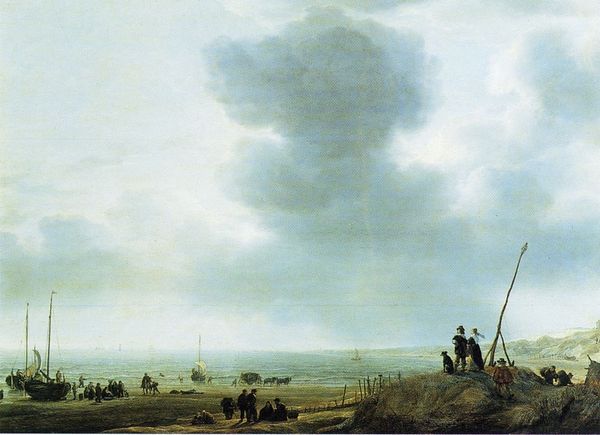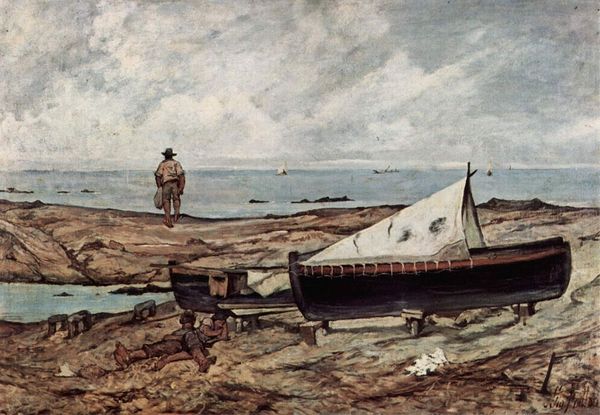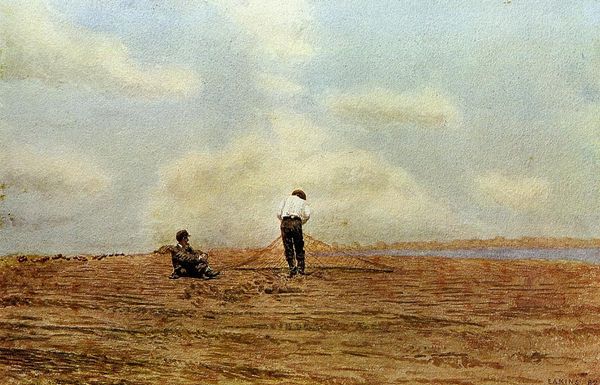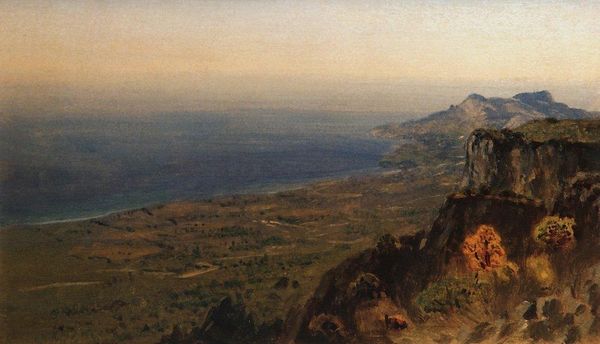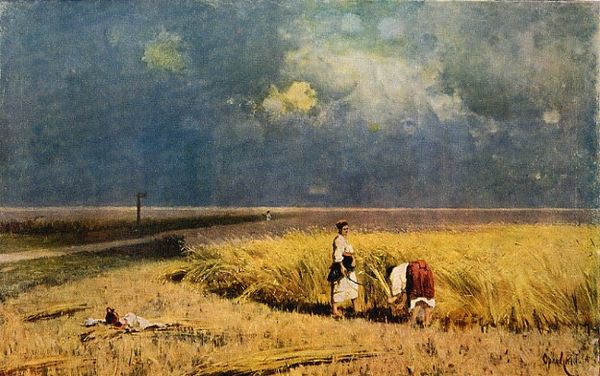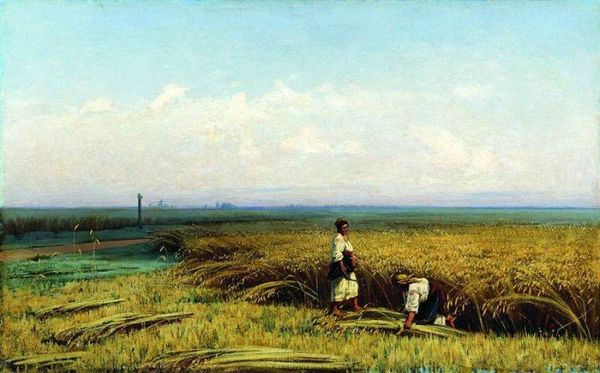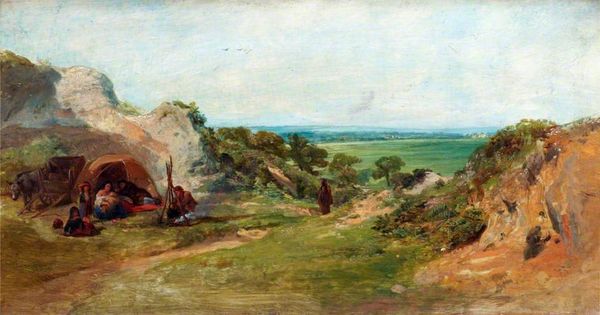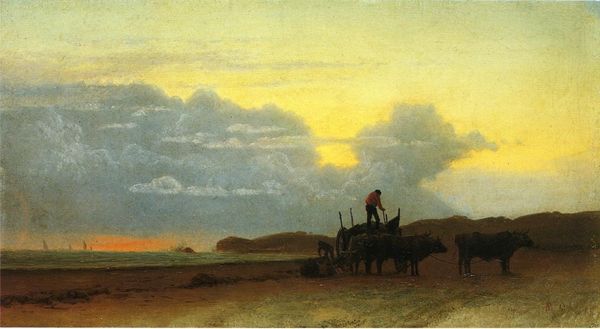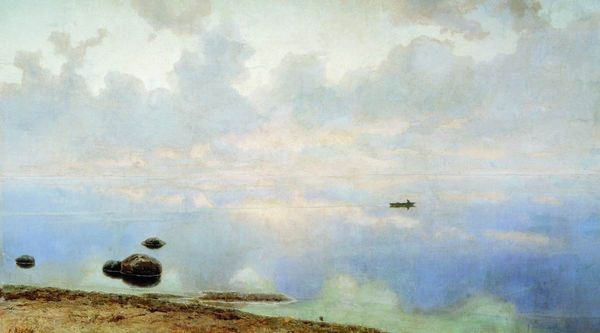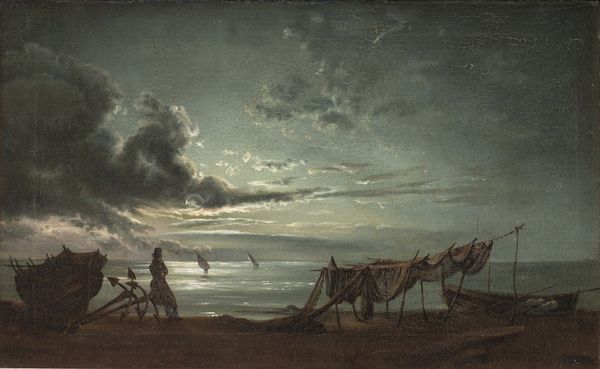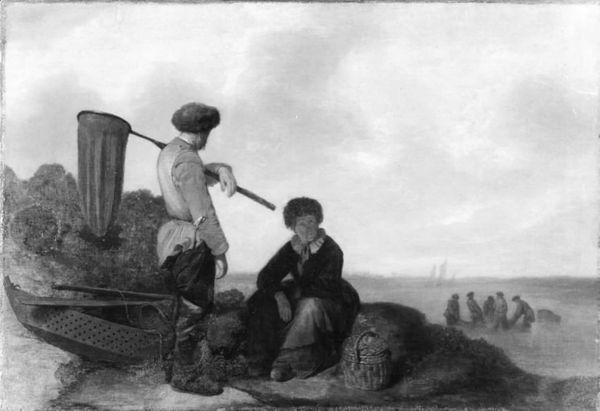
Picket on the Danube 1879
0:00
0:00
vasilyvereshchagin
Museum of Russian Art (Tereshchenko Museum), Kyiv, Ukraine
#
rough brush stroke
#
war
#
waterfall
#
river
#
charcoal drawing
#
painted
#
possibly oil pastel
#
oil painting
#
derelict
#
acrylic on canvas
#
underpainting
#
soldier
#
water
#
painting painterly
#
watercolor
Copyright: Public domain
Editor: "Picket on the Danube," painted in 1879 by Vasily Vereshchagin, offers a subdued, almost melancholic view. The soldiers appear quite isolated against the vastness of the landscape. How do we interpret this depiction in relation to its historical context? Curator: It's crucial to remember Vereshchagin’s dedication to portraying the reality of war, diverging sharply from the glorified, heroic depictions prevalent at the time. His experiences in the Russo-Turkish War profoundly shaped his art, driving him to expose its grim realities. The "Picket on the Danube," with its desolate landscape and seemingly aimless placement of soldiers, acts as a potent critique of military conflict. What does the emptiness convey to you? Editor: I see a sense of abandonment and the insignificance of the individual within a larger conflict. It suggests a war that perhaps isn't glorious but filled with quiet suffering. Curator: Exactly. Vereshchagin challenges the conventions of war painting. His exhibition of war paintings in Europe caused considerable controversy; he intentionally provokes discourse, urging viewers to confront the human cost often obfuscated by political rhetoric. Note the way the natural elements seem to dwarf the soldiers; it questions the lasting impact of their efforts against the enduring power of the land itself. What do you make of his muted palette? Editor: The muted tones reinforce the somber mood, reflecting a world drained of vibrancy by war. It steers away from any heroic idealization. I understand better how the artist challenges our perceptions of war. Curator: Precisely. Considering Vereshchagin’s personal experiences and the broader socio-political climate, "Picket on the Danube" is not just a landscape but a commentary. We discussed that the role of art is to confront uncomfortable truths. Editor: I realize I looked at this painting too simply. The placement within his whole oeuvre, the period it was made, that's the way to contextualize it and how its meanings are developed. Thank you.
Comments
No comments
Be the first to comment and join the conversation on the ultimate creative platform.
